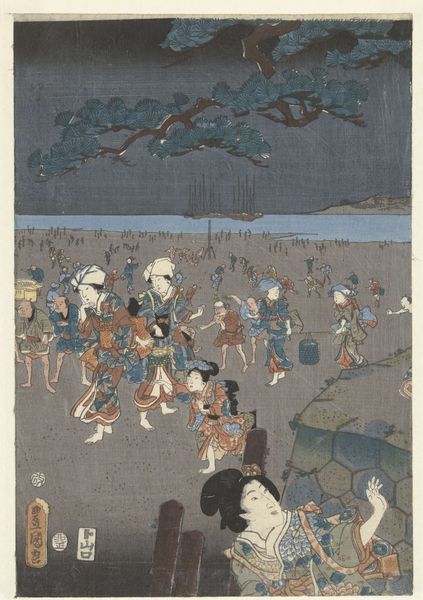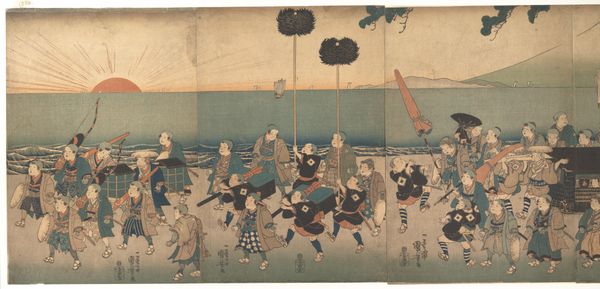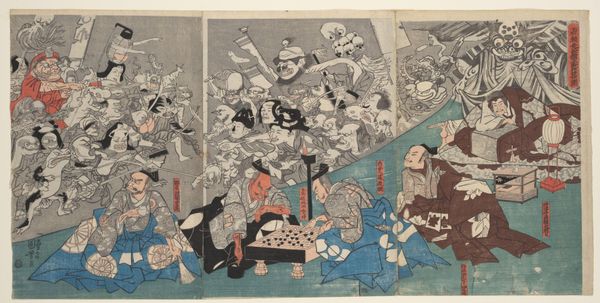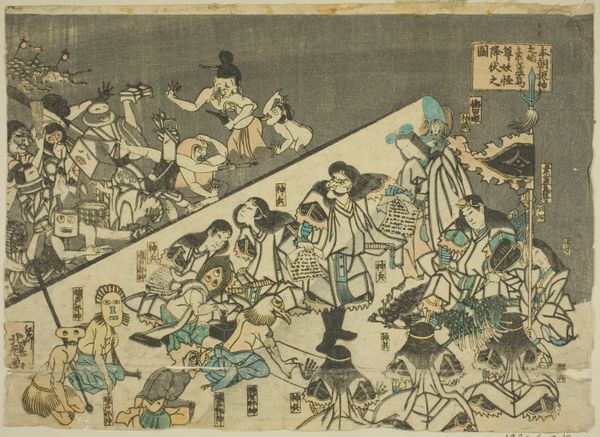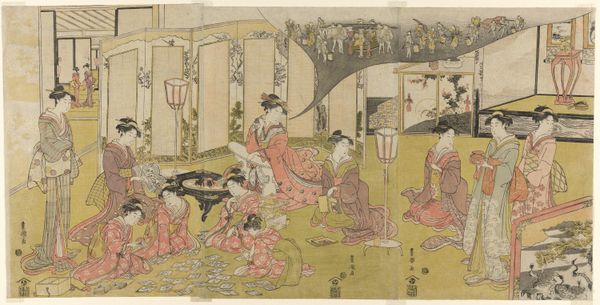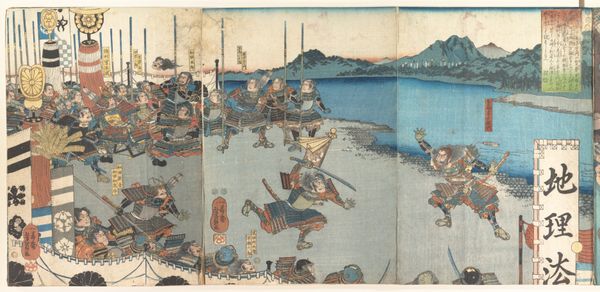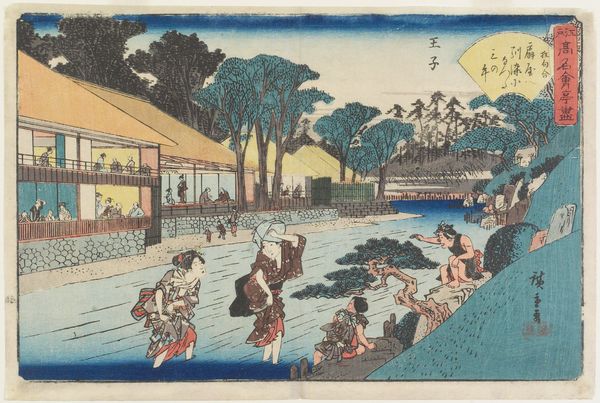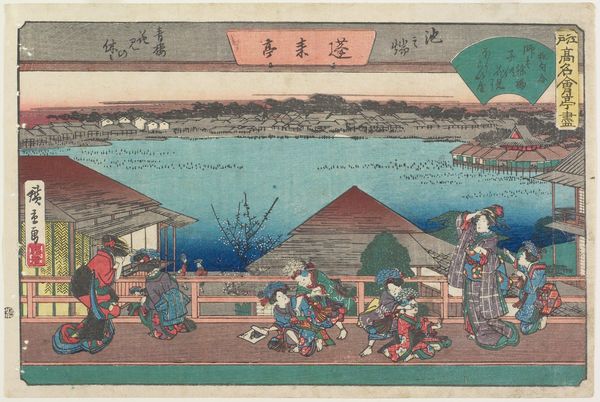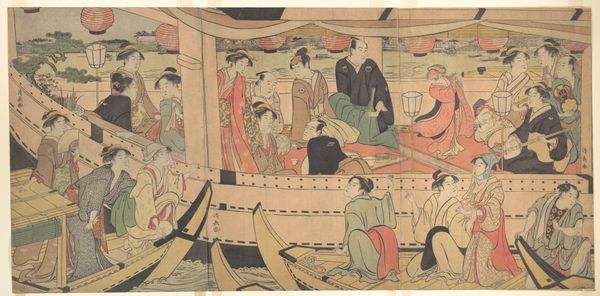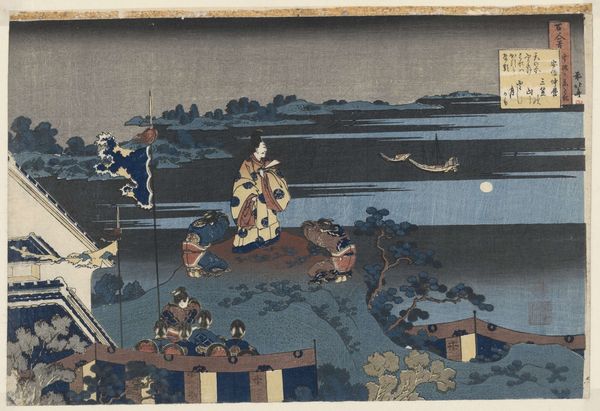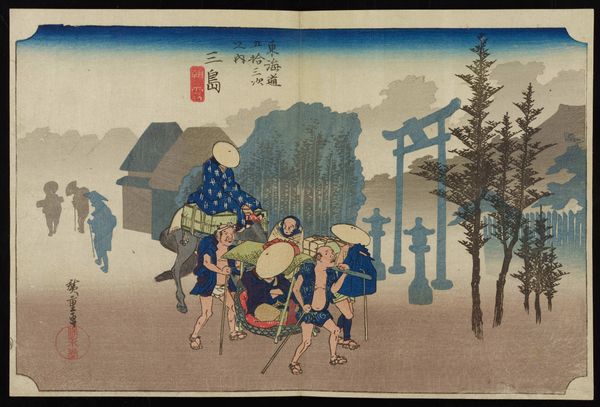
print, textile, woodblock-print
#
narrative-art
# print
#
asian-art
#
landscape
#
textile
#
ukiyo-e
#
figuration
#
woodblock-print
#
genre-painting
Dimensions: height 356 mm, width 250 mm, height 355 mm, width 248 mm, height 355 mm, width 249 mm
Copyright: Rijks Museum: Open Domain
Editor: Here we have "Shell Gathering on Akashi Beach," a triptych woodblock print by Utagawa Kunisada from 1855. The dark blue hues give the beach a melancholic yet festive atmosphere despite the large number of figures. What can you tell me about this piece? Curator: This print provides a glimpse into the vibrant socio-cultural landscape of mid-19th century Japan, particularly the rise of leisure activities among the merchant class. It reflects not just shell gathering as a pastime but also as a potential meeting ground. What’s the relationship between the figures from your perspective? Editor: It's like we are peeking in on an interaction between multiple groups of people and there are varied interactions throughout the whole print. I am interested in learning how the print medium itself democratized art, as the subject portrays this democratization? Curator: Exactly. Ukiyo-e prints, mass-produced using woodblocks, were affordable. Consider the themes often depicted in these prints – theatre, courtesans, landscapes. How do you think the representation of leisure and everyday life contributed to social identity and aspirations within this burgeoning consumer culture? What norms do you observe depicted, for example regarding the place of women? Editor: Well, the way people dress obviously signifies class and social roles. But seeing women of various classes freely moving about gathering shells, engaging in playful interactions, implies that art at the time served as a means to reflect societal norms, document popular leisure activities and perhaps challenge existing social hierarchies, albeit subtly. Curator: Precisely. Furthermore, the artist subtly includes textual references and calligraphic elements that weave literary associations into the image. This interdisciplinary approach connects high and low art, enriching the viewers experience, wouldn’t you say? Editor: I think you’re right! I didn’t quite notice those textual layers, but now that you mention it, they add another layer of narrative. I guess what stands out for me is now that leisure becomes less exclusive. Curator: Agreed. This piece exemplifies how art mirrors society’s shifting dynamics. Thank you for the thoughtful exchange, seeing that helps solidify those historical details!
Comments
No comments
Be the first to comment and join the conversation on the ultimate creative platform.

